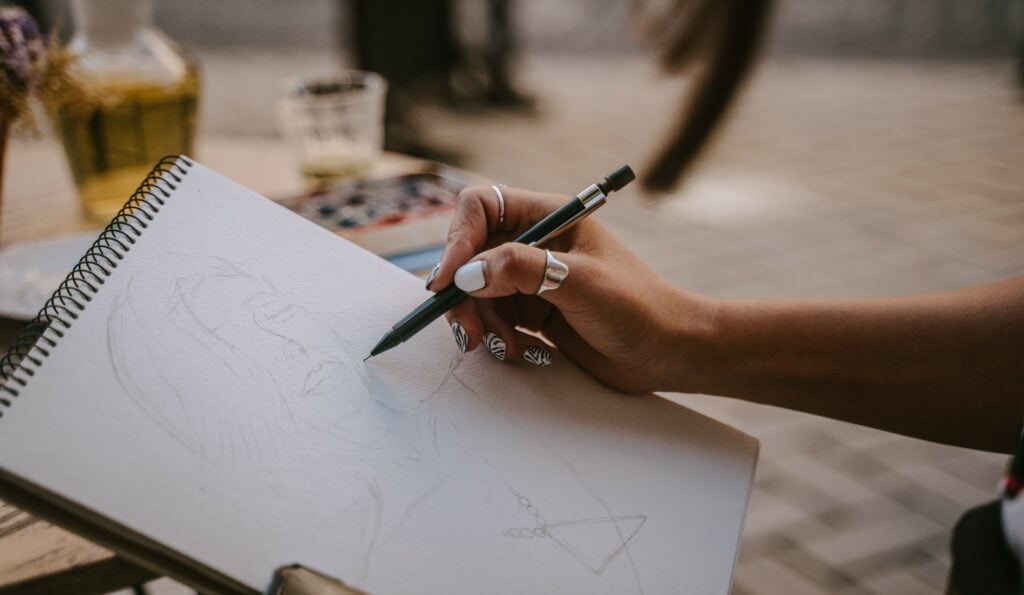Eating disorders in men and boys
Reviewed by Susan Radzilowski, MSW, LMSW, ACSW


When we think of eating disorders, we tend to think mostly about how they affect women and girls. However, approximately 10 million men and boys in the US will be affected by an eating disorder at some point in their lives.1 Recent studies show that boys and men make up a quarter of reported cases of bulimia and anorexia.2


Despite this, resources and screening tools are designed mainly for women. Our culture has yet to catch up to the idea that anyone of any gender can develop an eating disorder.
Which eating disorders affect men?
Men can experience a variety of eating disorders, but the following three are most common.
Anorexia nervosa
Anorexia is characterized by abnormally low body weight, an intense fear of gaining weight, and a distorted body image. People with anorexia often go to extreme measures to lose weight, such as obsessive dieting, exercising, starvation, or laxative abuse. While food restriction looks similar across genders, desire for strength as well as a lean body may be an especially powerful motivating factor for men.
Bulimia nervosa
Bulimia involves cycles of bingeing (eating large amounts of food) and purging (vomiting or abusing laxatives to remove food from the body). Purging is the most common form of “compensation” for bingeing, but people with bulimia may also try to counteract the calories they consume by fasting or overexercising. Most of the damage from bulimia appears in the gastrointestinal tract, esophagus, mouth, and kidneys. For male athletes, who tend to exercise excessively as a form of compensation, bulimia tops the list of eating disorders.3
Binge eating disorder (BED)
Binge eating disorder (BED) may be the most common eating disorder found in men.4 BED involves eating a lot of food very quickly, often to the point of physical discomfort. Unlike people with bulimia, people with BED don’t purge after bingeing. This disorder is often tied to gaining weight to build muscle.
The ideal male body standard
Tom Wooldridge, PsyD, ABPP, CEDS-S, a psychologist who specializes in eating disorders, says that men are also under pressure to reach a certain body standard. “The model that’s put out there is a hypertrophic, muscular physique,” Woolridge says. “Men are expected to have six-pack abs, for example, yet there are huge genetic components to whether that’s even possible for a given person.”
The “ideal” male body, like the “ideal” female body, is often glorified in the media. Male body image dissatisfaction is understudied, but researchers think contributing factors include social media, video games, movies, action figures, and celebrities.5, 6 Young boys see these ideals and internalize them, which can lead to risky behaviors in an effort to achieve them.
Muscle dysmorphia
Another result of the ideal body standard is a form of body dysmorphic disorder called muscle dysmorphia (MD). Often referred to as “bigorexia” or “reverse anorexia,” MD is characterized by a person’s obsession with their muscles. People with muscle dysmorphia tend to view their muscles as smaller than they actually are and become obsessed with building muscle mass.
Studies show muscle dysmorphia is linked to a higher risk of eating disorders.7 “Because muscle dysmorphia requires bulking, it is often paired with binge eating disorder,” Wooldridge says. Athletes or people who exercise excessively are at higher risk. “Eating and exercising a lot and going hard with food and in the gym are often seen as virtues,” says Woolridge. “In fact, these behaviors can mask underlying problems and be dangerous.”
Who is at risk?
Anyone can develop an eating disorder, but certain populations are more vulnerable.
Athletes
Participating in certain sports is a risk factor for eating disorders. “Sports that involve weight classes, like wrestling, boxing, or rowing, often encourage cutting and gaining weight rather quickly, which can be a common precursor to an eating disorder,” says Wooldridge. In a study of NCAA Division I athletes, 12% of male athletes reported unhealthy eating habits.8
People in the LGBTQIA+ community
Members of the LGBTQIA+ community face more adversity in general due to discrimination, which can lead to an increase in eating disorders. In recent studies, self-identified gay men and boys were found to be at higher risk for an eating disorder than their heterosexual counterparts because they were more likely to be concerned with having a lean body.9
This risk also affects the transgender community, says Woolridge, as trans and nonbinary people may engage in disordered eating while trying to make their bodies fit an unrealistic ideal (or, in some cases, to reduce curves or cease menstruation).10 Sometimes an eating disorder may even be an early indicator that someone is questioning their gender identity. “I’ve had patients who come in and present as anorexic, and after two or three years of therapy come to feel that they’re actually trans and the eating disorder was a masking condition,” he explains.
People with accompanying conditions
Certain conditions or illnesses tend to happen alongside eating disorders.11 Examples include:
- Anxiety disorder
- Depression
- Obsessive-compulsive disorder (OCD)
- Bipolar disorder
- Body dysmorphic disorder
- Substance abuse disorder
People impacted by sexual abuse
Studies show that sexual abuse, especially in childhood, results in an increased likelihood of eating disorders—yet it’s also one of the more underreported forms of abuse.12 According to the National Sexual Violence Resource Center, one in six boys and one in four girls will experience sexual abuse before they turn 18, but only 12% of child sexual abuse cases are reported to authorities.13
Underreporting and underdiagnosing
While eating disorders among men are on the rise, many remain undiagnosed. Sometimes men don’t step forward and ask for support as a result of social pressure. “Traditional constructions of masculinity are associated with decreases in seeking help,” says Wooldridge.
In addition, because eating disorder treatment plans have long been focused on women—especially cisgender White, western women—the screening tools designed to spot these disorders were designed with that narrow audience in mind.14 Wooldridge says that progress is being made, but many providers still use standard screening tools that are inherently biased.
Treatment options
If you or someone you love is struggling with an eating disorder, take hope. Here are some ways to find a path toward healing.
Find a therapist trained in eating disorders. An important part of this work involves deconstructing the social stigmas around men and eating disorders, says Wooldridge. A therapist trained in eating disorders will keep this at top of mind while helping you toward healthy weight restoration. Browse our therapist directory to find a licensed professional near you.
Connect with others who can relate. Support groups and group therapy are great tools to help overcome stigma and shame, and all-male group settings have proven successful for adult men.15 Wooldridge also suggests family therapy for adolescents with eating disorders.
Reach out to an advocacy group. Eating Disorder Hope has a full range of online support groups and ways to connect with professionals for healing, and the National Eating Disorder Association has screening tools and links to help you find support in your area.
Body neutrality for all
As society makes slow but steady progress in how we represent women’s bodies in the media, it’s important to remember that vulnerable populations of men are also under pressure. Campaigns focused on loving our bodies, treating one another with respect, and moving toward body neutrality should encompass all genders.
This includes putting less pressure on student-athletes, modeling healthy habits at home for our kids, and creating spaces where men and boys can be vulnerable—and have that vulnerability recognized as strength.

Sources
1 https://www.nationaleatingdisorders.org/learn/general-information/research-on-males/
2 https://www.sciencedirect.com/science/article/abs/pii/S1056499319300641
3 https://www.npr.org/2019/03/02/699733879/underdiagnosed-male-eating-disorders-are-becoming-increasingly-identified/
4 https://www.ncbi.nlm.nih.gov/pmc/articles/PMC4940910/
5 https://www.sciencedirect.com/science/article/abs/pii/S0747563214002386/
6 https://www.sciencedirect.com/science/article/abs/pii/S1740144505001026/
7 https://www.ncbi.nlm.nih.gov/pmc/articles/PMC7044626/
8 https://thesportjournal.org/article/disordered-eating-and-compulsive-exercise-in-collegiate-athletes-applications-for-sport-and-research/
9 https://jeatdisord.biomedcentral.com/articles/10.1186/s40337-020-00327-y/
10 https://link.springer.com/chapter/10.1007/978-3-030-67127-3_18/
11 https://jeatdisord.biomedcentral.com/articles/10.1186/s40337-022-00654-2/
12 https://www.sciencedirect.com/science/article/abs/pii/S0890856709626198/
13 https://www.nsvrc.org/sites/default/files/publications_nsvrc_factsheet_media-packet_statistics-about-sexual-violence_0.pdf
14 https://policylab.chop.edu/blog/one-size-doesnt-fit-all-need-improve-eating-disorder-assessment-tools/
15 https://www.ncbi.nlm.nih.gov/pmc/articles/PMC3479631/
About the author
Amye Archer, MFA, is the author of “Fat Girl, Skinny” and the coeditor of “If I Don’t Make It, I Love You: Survivors in the Aftermath of School Shootings,” and her work has appeared in Creative Nonfiction magazine, Longreads, Brevity, and more. Her podcast, “Gen X, This Is Why,” reexamines media from the ’70s and ’80s. She holds a Master of Fine Arts in creative nonfiction and lives with her husband, twin daughters, and various pets in Pennsylvania.
Related articles

Body dysmorphia: Signs, symptoms, and treatment
People with body dysmorphia are fixated on their perceived physical flaws...

Feeling bad about feeling bad about your body
Diet culture has changed, but it’s still here—and now body positivity has...

How you think and feel about your appearance can affect your sense of...

Psychodynamic therapy is a form of talk therapy used to treat a range of mental...
